WHAT’S INSIDE
Use nostalgia to engage new audiences

How do you measure customer loyalty? Track these 5 metrics
How trust creates ultimate channel partner loyalty
MAGAZINE
Why it pays to prioritize psychological safety in business
Event design: Use videos to tell better brand stories
VOLUME 24 | POWER OF EMOTION IN BUSINESS
from
the desk
of BRENT VANDER WAAL President and Chief Executive Officer
In my free time, I love to BBQ. I use certain equipment because it makes my brisket taste just the way I like. When I think about why I chose the specific equipment, it’s because of the emotional connection I have with the brands. It creates a sense of community with fellow BBQ lovers. And the seasoning products contribute to how barbecuing for other people makes me feel. Nothing beats the positive emotions from enjoying a shared experience together.
Emotion plays a critical role in decision-making
Every brand must aim to build the same sense of loyalty with their own employees, channel partners and customers. Whether you’re selling a service or a top-trending item, or promoting organizational culture, people need to connect with what you’re saying. Emotion must be part of your business strategy.
We like to think we make most decisions with our heads. But the reality is that emotions have a huge influence on our brains. People choose brands because of how the brand makes them feel.

Brands use emotional connections to stay ahead of competition
Where the brands of yesterday focused on positioning themselves in the minds of audiences, today’s successful brands focus on positioning themselves in the lives of audiences. If your audience doesn't emotionally connect to your brand, they’ll be vulnerable to more emotional messages from direct competitors. But you and I know, the grass isn’t always greener; it’s just marketed better.
Humanizing brand experiences creates advocates
Make sure your employees, channel partners and customers know you’re more than a collection of products and services or a place they work each day. When your audience emotionally connects with your brand, you achieve long-term brand advocates in return.
Read on to see how emotion is a critical factor in sustaining successful employee, channel partner and customer experiences. And grab some BBQ to enjoy while reading!
contents
02 Use nostalgia to engage new audiences
08 How do you measure customer loyalty? Track these 5 metrics
1 2 How trust creates ultimate channel partner loyalty
16 Why it pays to prioritize psychological safety in business
20 Event design: Use videos to tell better brand stories
insights magazine | 1
Use nostalgia to engage new audiences
Everyone remembers where they were when a positive life event happened. What color clothes were you wearing? What did it smell like? How did you feel?
Any object or experience may transport you back to that exact moment, bringing up feelings of joy and familiarity. Some memories stick with us because they resonate so deeply.
In the same way, people crave meaningful experiences they can remember fondly and proudly that associates with your brand. It’s those moments that capture a memory that employees, channel partners and customers will treasure forever.
2 | insights magazine
Tap into your audiences’ emotions with nostalgia marketing
Nostalgia marketing associates a brand’s product or service with memories from the past, so the brand's target audience forms an emotional connection. When done successfully, your brand becomes part of their identity.
Nostalgia marketing is personal, and it connects brands with people on a deeper emotional level. For example, would you rather bring back an original watercolor of the beach you walked on during vacation or snag a sweatshirt in the airport before your flight home? Selecting the right products—and gifting them at the right time—transforms your brand’s product into a keepsake souvenir.
Psychology Today shared experimental evidence that indicates people experience nostalgia as an overwhelmingly positive emotion. It boosts one’s mood, invigorates positive memories, and can even foster feelings of warmth, happiness and comfort.
Our experienced experts at ITA Group and CMB, a full-service market research firm and a member of our community of companies, foster the same emotions when working on our clients’ programs. Read what they have to say about how they ensure all audience types find something to connect with.
Businesses that optimize for emotional connection outperform competitors by 85% in sales growth. They see greater retention and benefit from more social buzz, too.
—GALLUP
 CASEY MOHAN
Vice President, Qualitative Insights & Strategy, CMB
CASEY MOHAN
Vice President, Qualitative Insights & Strategy, CMB
Qualitative methods elevate the voice of the customer and help uncover the right emotions to create effective nostalgia marketing strategies. Empathy mapping is one way to gain a rich understanding of emotional territories and key moments of nostalgia. In addition, empathy mapping helps researchers understand and empathize with audience's experience, emotions and perspectives. It also identifies emotional triggers that evoke nostalgia.
When brands understand an audience's emotional response and their emotional connection to memories, they can identify unique positioning opportunities, inform messaging and guide customer experience design.
CMB’s proprietary emotionAI tool identifies key emotions and moments, at scale. This tool combines qualitative and quantitative insights, offering a unique lens into the competitive landscape and uncovering emotional connections people have with a brand.
Using emotionAI during empathy mapping enhances understanding of audience emotions and memories, helping brands create more impactful nostalgic marketing strategies.
4 | insights magazine
 SASHA MCCUNE
Vice President, Media, Entertainment & Culture, CMB
SASHA MCCUNE
Vice President, Media, Entertainment & Culture, CMB
Given the recent trend cycle, it's evident that nostalgia is having a big moment. Roller-rink retro revival is back with a modern twist (and what an amazing Super Bowl Halftime Show twist). Barbie made a smash hit comeback this past summer (despite initial skepticism). Behind these big wins is masterfully engineered nostalgia.
That begs the question: Can you manufacture and create nostalgia? How do you know when the time is right for a revival? Is there a secret formula? Cracking positivity starts with great research to explore the authentic levers behind nostalgia as well as other complex emotions.
For example, nostalgia has different meanings when it’s active vs. passive, or positive (from a place of joy) vs. negative (from a place of longing). Taking a more complex approach to measuring emotions and sentiment in your discovery research, development cycles and concept testing is how brands end up with award-winning marketing strategies and engagement moments that last. Our analysts use tools like emotionAI, as well as known psychology frameworks for emotions to help brands get deeper into the underlying sentiments behind core emotions.
insights magazine | 5
 RICHARD SCIONTI
RICHARD SCIONTI
Vice President, Product Development & Innovation, CMB
Building off what Sasha and Casey mentioned about emotionAI, here’s a visual look at how nostalgia can have different impacts. Using this framework helps brands identify and meet customers where they are when creating product and services.
“Restorative nostalgia” happens when we long to return to or recreate the past, often accompanied by dissatisfaction with the present. High engagement might indicate a struggle or a deep emotional investment in the past, possibly encouraging action aimed at recapturing or reliving past experiences, despite negative emotions associated with it.
NEGATIVE
“Resigned nostalgia” happens when we acknowledge the unattainability of the past and a passively accept loss or change. We might experience a sense of melancholy or sadness linked to the past but lack energy or desire to engage with these feelings.
ENGAGED
“Reflective nostalgia” happens when we idealize the past and use it as a source of comfort and inspiration. Individuals may reminisce about past experiences that bring joy and warmth, actively seek out reminders of the past or engage in conversations about it.
POSITIVE
“Comfort-zone nostalgia” happens when we feel positive but exhibit low engagement. Nostalgia acts as a gentle, comforting backdrop rather than prompting us to explore or reflect. We see this when music from a past era evokes happiness without leading to deep engagement with the memories associated with it.
PASSIVE
 MEGAN MERRY
Creative Design Director, ITA Group
MEGAN MERRY
Creative Design Director, ITA Group
When working through a concept with the team, we always anchor back to the human emotion: Why should they care? What’s the benefit to them? How can this make their life easier or better? Once we have those questions cared for, we have a strong way to position the content in an impactful way to our participants. Sparking an emotion in our participants is what keeps our programs relevant and participants engaged.
6 | insights magazine
NEUTRAL
 ERICA LALK Senior Manager, Strategy Team, Event Solutions, ITA Group
ERICA LALK Senior Manager, Strategy Team, Event Solutions, ITA Group
Some stories stick with us. Think of the books you’ve held on to through the years. We all have favorite stories we keep copies of because they resonate so deeply. Event professionals are now tapping into that nostalgia emotion when using storytelling in immersive event design. Storytelling and other key psychological elements build brand loyalty by infusing emotion in immersive experience design.
We draw from storytelling patterns to encourage involvement. The more attendees participate in activations, the more your brand’s event becomes a part of their personal story. You want attendees to share your brand’s story again and again. Creating a compelling narrative and infusing thoughtful details into your events helps attendees capture a memory they’ll treasure forever.
Lasting brand loyalty comes from emotional connections
Nostalgia is essential to the human experience. As a marketing tool, it’s a powerful way to engage with your audiences on a deeper, more emotional level. One that builds long-term brand loyalty.
Make your brand’s story one your people want to look back on fondly.
insights magazine | 7
How do you measure customer loyalty? Track these 5 metrics
 By: Max Kenkel Senior Manager, Customer Solutions, ITA Group
By: Max Kenkel Senior Manager, Customer Solutions, ITA Group
8 | insights magazine
People crave human connections. They have an innate desire to connect with like-minded people and brands that align with their values. With so many product and service choices available from thousands of brands, building customer loyalty is critical if brands want to stay relevant.
While businesses tend to focus on transactional metrics such as retention, purchase behavior and incremental sales, there is also monumental benefit in looking at emotional components.
How to track customer loyalty effectively
To get the most out of your measurement plan, look at a combination of customers who act loyal (behavioral) and customers who feel loyal (emotional). The ideal overlap is customers who both act and feel loyal, but there isn't always a direct correlation between emotional and behavioral loyalty.
Here are five areas to measure customer loyalty. Note that each metric might have many others that roll up to one overarching KPI.
LOYALTY
While loyalty is an outcome of a great customer relationship, it’s something brands should track. Repeat purchase rates are a great metric to include here. They’re the percentage of customers you retain who come back to place another order.
Think of it like this: “Once is chance, twice is coincidence, third time is a pattern.” When a customer chooses you several times, you can self-assess why.
> Is this customer looking at you because you’re positioning on price?
> If you’re a premium brand, are they having a positive experience each time leading them back to you? (Note: Transactional brands can also deliver amazing experiences.)
> What’s the timeline between purchases? Are they always choosing you or just buying a lot of products? Your brand’s sales cycle needs to be a consideration.
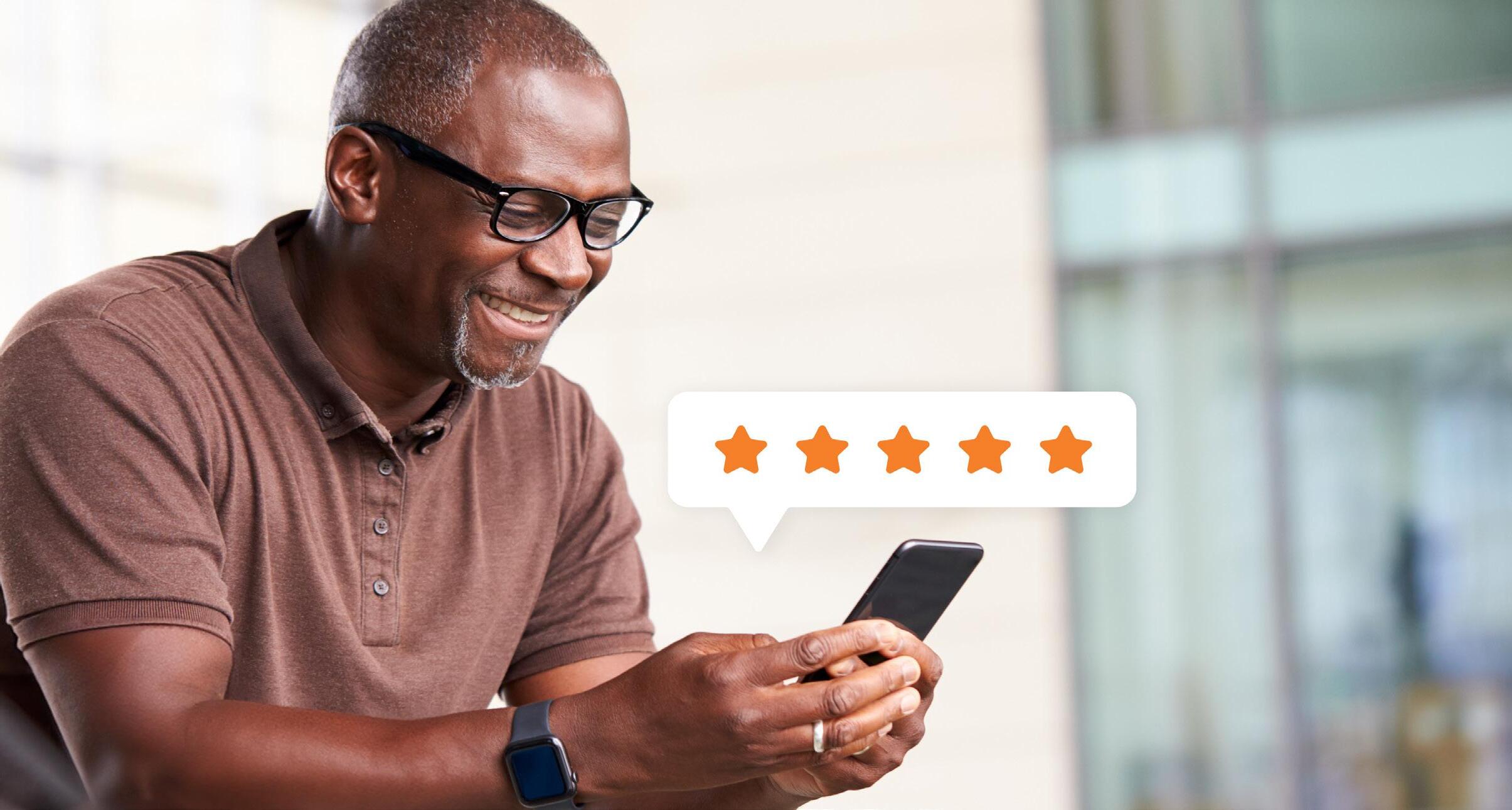
VALUE
Customer Lifetime Value (CLV) represents the total amount of money a customer will spend on your business during their lifetime. And if you can’t calculate the entire lifetime, tracking value increases (and decreases) over shorter periods of time is still relevant. It also helps you decide when and where to insert promotions and offers that keep value high.
> Identify value you can track (purchases, repeat purchases)
> Pay attention to and track fluctuations in value
> Incorporate test and learns into your communications and promotions, like subject headings, messaging and offers, to influence value across your customer base
ENGAGEMENT
Tracking engagement recognizes customers for every interaction (across any channel) they make with a brand.
> Understand how often your customer thinks about you. How long is the purchase window for your products? Is it something you buy daily? Weekly? Monthly? Yearly? Once every 10 years?
> Stay top of mind. If you’re a once-every-fiveyears product, customers likely start the search with you, meaning it’s your consumer to lose.
> Implement trackable ways for people to interact outside the purchase cycle. Then, tie it back to your CLV measurements.
10 | insights magazine
INFLUENCE
Customers are always willing to listen to their friends. Tracking influence—and metrics that identify influence— can grow your customer base.
> Track referrals to put a dollar value on influence
> Follow social media activity, order insight, (purchases, combination of purchases, etc.) campaign interactions and more to identify likelihood of a customer to promote your brand
> Use tracking information to create opportunities for customers to share their personal experiences about your brand on socials
SENTIMENT
In the past, people measured customer loyalty solely by customer behavior. A new understanding of customer loyalty and access to more insights means that today’s customer loyalty metrics include emotional connections as well. Some experts argue that even though emotional loyalty may be harder to measure, it’s necessary to build a true loyalty measurement equation.
> Uncover specific areas for improvement, track gaps in service and product, and identify where you are outperforming the competition
> Empower your field with data that lets them go above and beyond
> Provide customers with an experience that promotes satisfaction and encourages loyalty, then invite them to make referrals
> Use a survey to ask customers about an interaction or purchase with your brand (i.e., sliding scale [quantitative] or an open-text response [qualitative])
> Put measures in place for recovery and retention
Measuring customer loyalty metrics leads to stronger program performance
Customer journeys are changing rapidly. You need real-time insights on your loyalty program performance to make informed decisions about budget allocation, future promotions and more.
By tracking and measuring behavioral and emotional metrics, you can tap into customers’ motivations easier. This results in reduced marketing costs, increased profits and a more predictable revenue stream. It’s tough to beat that!
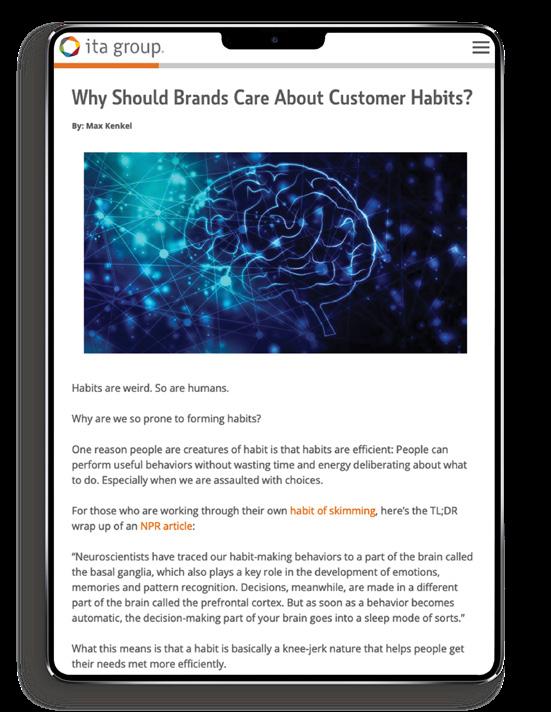
A true loyalty program should address every phase in the buyer’s journey, with not only different tactics by phase, but also different tactics and journeys by customer type.
Read our article to find how customer habits impact customer loyalty.
info.itagroup.com/customer-habits
insights magazine | 11
How trust creates ultimate channel partner loyalty
 By: Ellen Linkenhoker Senior Manager, Channel Solutions, ITA Group
By: Ellen Linkenhoker Senior Manager, Channel Solutions, ITA Group
Trust is the currency of business loyalty. And it's no different for channel partners. They form lasting relationships with brands based on reliability, integrity and exceptional service.
Yet, trust isn't something that can be easily acquired. It's cultivated through consistent, superior experiences that, coupled with products and services, meet the partners needs and their customers, too. It's a journey that demands dedication and attention to detail, treating partners with the same care as direct customers. Attention that pays dividends when done right.
12 | insights magazine
How to earn your channel partners’ trust
At the heart of trust-building is establishing a mutually productive relationship with your partners. You can accomplish this by identifying the value you bring to each other. It's no longer just what's in it for the brand and cementing that with actions that speak louder than words. Building meaningful connections beyond just transactions is what lays the foundation for enduring channel loyalty.
Research reveals that how customers feel about a brand carries 1.5 times more weight than their cognitive perceptions.
Treat your channel partners like you would your customers. Personalize their engagements with you and your channel program, prioritize interactions that drive value for you both and watch the sustainable growth unfold.
How to develop lasting channel partner relationships
Build lasting partner relationships with valuable, relevant content that fits their lifecycle and industry. A more personalized approach requires a deeper understanding of your channel segments. You must “get” them on a personal level.
You know what your partners need. But do you know what they want? Partners expect consistent experiences, but the things that go above and beyond can net brands more trust. Things like:
> In-person events
> Advanced training and certification
> Personalized goals
> Exciting incentives
Successful, engaging experiences build relationships within the channel that leads to trust. Once you make an emotional connection with your partners, you get much more than traditional loyalty—you get passionate, engaged advocates of your business. Connecting with partners and customers this way offers three times the return of just satisfying them.
How to measure channel partner loyalty
According to a recent report from Forrester, measure loyalty using behavioral and emotional drivers.
Behavior or transaction-based drivers typically include:
> Financial and sales metrics
> Customer service scores
> Retention tallies
> And more
Emotion or attitude-based factors (across all industries) include the level to which your partners feel in their relationship with your people and brand.
> Confident
> Happy
> Respected
> Valued
Weaving a combination of behavioral and emotional metrics helps brands understand how trust and connection in your channel impacts your business.
For example, Xerox wanted to understand how attitudinal factors affected performance among their 1,000+ resellers. They discovered “a high correlation (75%) between channel satisfaction (defined as the degree of trust, commitment, conflict and co-operation) and the reseller’s willingness to develop sales.”
The study also noted that reseller satisfaction was “significantly dependent” upon how they felt about their relationship with Xerox. The products, support and delivering on their promise was less important.
How channel partner trust leads to brand advocacy
Channel partners occupy a critical position in the brand value chain, and relationship management is far more complex than traditional loyalty programs. Do the research. Interact. Ask questions of your partners. Take time to understand the unique drivers of people in your channel segments.
Nurturing strong relationships takes a focused and concerted effort to develop trust and brand advocacy. It begins at the person-to-person level. “Trust is built and maintained by many small actions over time,” says Lolly Daskal, President and CEO, Lead From Within.
Channel customers who trust their partners have less price sensitivity and offer more recommendations to others for their partners’ products and services—and by conduit, yours. Also, B2B brand advocacy leaders grow 4–8% above their market’s growth. Everyone wins. Start building trust now and brand advocacy will follow.
14 | insights magazine


Why it pays to prioritize psychological safety in business

 By: David Colgate, Innovation Director, NKD, and Tanya Fish, Employee Experience Solution Line Manager, ITA Group
By: David Colgate, Innovation Director, NKD, and Tanya Fish, Employee Experience Solution Line Manager, ITA Group
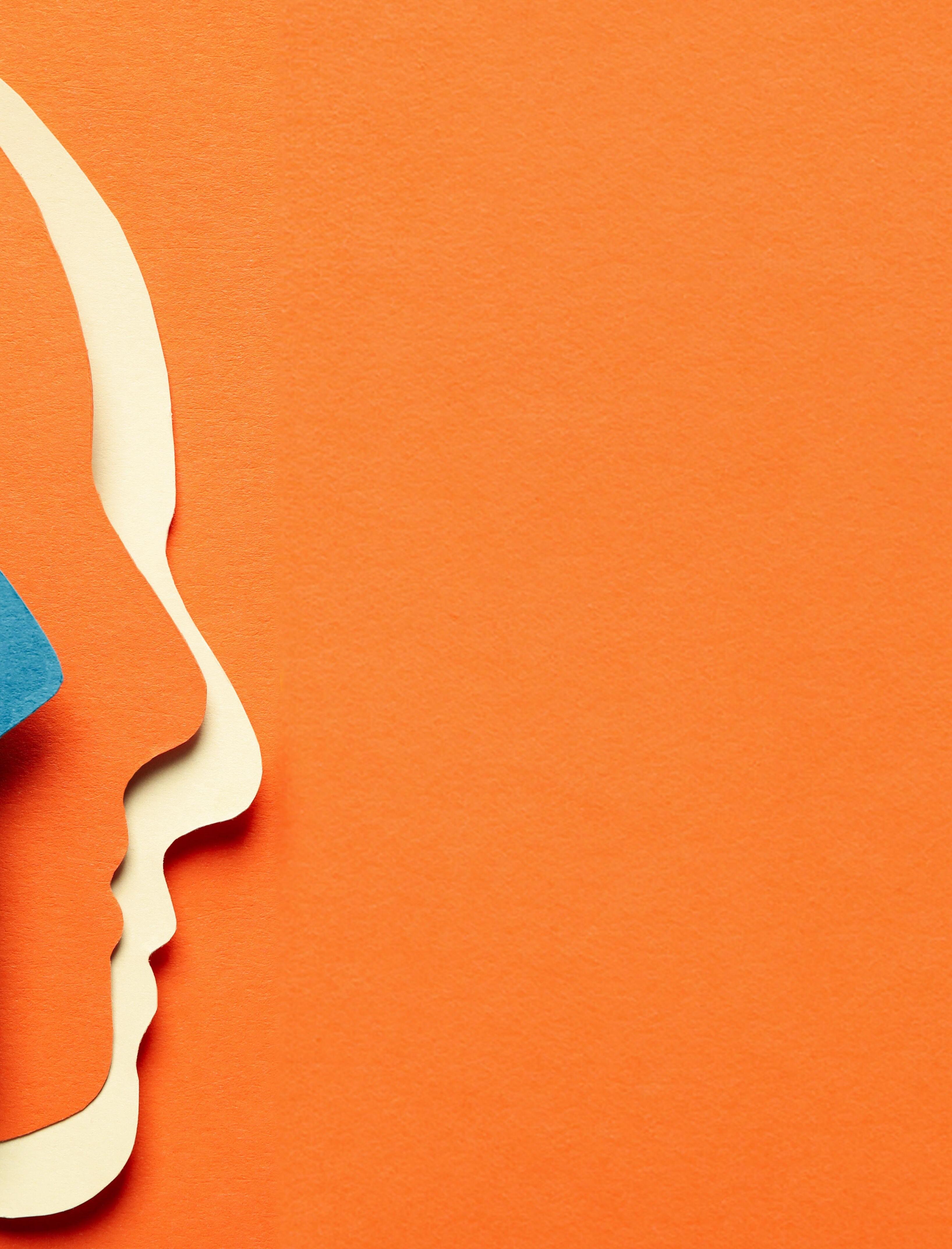
Think back to a moment when you were proud of yourself. What was the environment like? Were you surrounded by supportive people to encourage you? How did you stay motivated? What did it feel like to have your hard work recognized?
Likely, your environment was safe for you to excel and experience positive feelings. A place where you felt safe to ask questions, share ideas, give and receive feedback, and take risks to challenge the status quo.
A place where you had a strong sense of control and belonging, and a feeling of appreciation. When humans have their basic needs met, they can contribute to a community and experience self-worth. Psychological safety is one of those needs. It contributes significantly to employee motivation and engagement at work.
Psychological safety results in better workplace
Brands must build psychologically safe environments if they want to be successful. Psychological safety contributes to an inclusive, diverse and accepting workplace. It’s positive and even liberating to express our authentic selves and feel heard.
Psychologically safe workplaces promote healthier, more productive and more inclusive workforces. They also provide an environment where innovation can thrive, and employees can perform their best. The results are worth the effort.
Leaders can remove interpersonal anxiety and encourage vulnerability
We want to create workplaces where everyone feels comfortable to be themselves. By removing interpersonal anxiety and welcoming workplace vulnerability, leaders can set the tone for an organization’s culture, employee experience and style of performance management, and how team members interact with each other.
INTERPERSONAL ANXIETY
50% more productivity from organizations (Gallup)
74% of employees feel less stressed (McKinsey)
27% less employee turnover (Gartner)
74% higher employee engagement (Gallup)
Establishing a culture that promotes psychological safety is the first step in making employees feel empowered and welcome to share their ideas.
Harvard Business School professor Dr. Amy Edmonson describes psychological safety as “an absence of interpersonal fear. When psychological safety is present, people can speak up with work-relevant content.”
Leaders must become better listeners to truly understand their teams’ personal fears and anxieties. It’s the best way to support employees so they feel heard, seen and valued. Here’s how leaders can do it:
> Promote respect and inclusivity for individuals
> Make time to check in, listen and ask for feedback with integrity and curiosity
> Be empathetic when connecting with team members
> Act with compassion to show genuine care
> Encourage contributions and acknowledge all strengths, skills, effort and ideas
> Model vulnerability always
Recently, we talked with senior leaders who expressed anxiety about being vulnerable in front of team members for fear of judgement. It’s not just team members who need to feel safe, but leaders, too. Psychological safety is relevant to us all.
18 | insights magazine

WORKPLACE VULNERABILITY
Workplace vulnerability is the ability to express and expose, in words and behavior, who we are and what we think and feel.

How to Support Belonging In a Hybrid Workforce


At work, psychological safety may look like being tentative at first, then being more yourself; feeling accepted and respected, being able to say what's important to you, no matter how odd you think it may be.
Workplace vulnerability can include situations, like:
> Speaking up at meetings
> Sharing new ideas or raising concerns
> Admitting to workplace errors
> Showing emotions
> Asking for help or clarity when needed
So, when people feel they can’t be vulnerable, they’re limited in how they participate at work and can’t perform to their full potential.
Psychological safety takes a concerted effort that leaders must model. Listen, learn, adapt. Embrace the mistakes and move forward.

among employees, no matter where they work. Download our ebook to learn how.
info.itagroup.com/hybrid-workforce
Investing in psychological safety is investing in your people and business
Employers that recognize the emotional needs of its workers—all of them, not just high earners—will see the most long-term success in employee satisfaction. Psychological safety is one of the most important factors when employees decide if they stay or go. What are you doing to keep your people?
insights magazine | 19
ITA GROUP EBOOK
Connect Employees to Your Culture & to Each Other, No Matter Where They Work

Event design: Use videos to tell better brand stories
How cinematic video production got people emotional at a live event

 By: Jeff Vara, Executive Creative Director, Hartmann Studios, and Ashley Bohnenkamp, Senior Manager, Event Solutions, ITA Group
By: Jeff Vara, Executive Creative Director, Hartmann Studios, and Ashley Bohnenkamp, Senior Manager, Event Solutions, ITA Group
The convention center darkens, and the crowd becomes still. All attention focuses on an LED monitor at the center of the stage. The video shows a white California bungalow, then cuts to a woman inside.
Maria is holding a black and white photograph of her grandmother, sharing how her resourcefulness influenced her own values. Like the strong women before her, Maria wanted to find a job that could help her take care of her family. We hear Maria make this connection in her own words.
[This company] is a big part of my history. It is the reason why my dreams came true and the means that I have what I have.
We see Maria serve customers in the store where she works, then share breakfast with her family. We hear from Maria’s colleagues on how she cares for them like she does her own children. We feel like we’re sitting across from her while Maria enjoys a break at her favorite café.
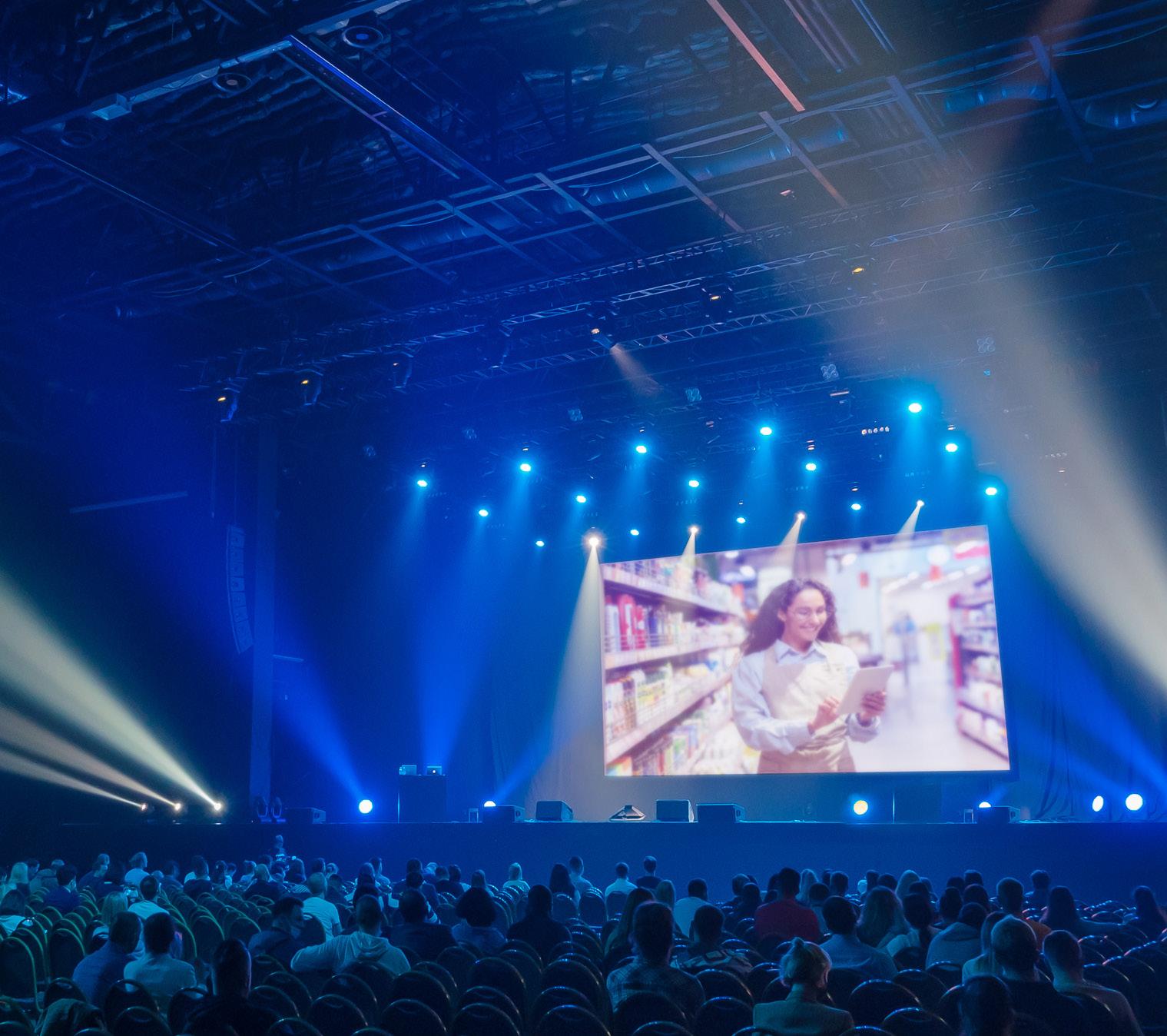
In less than five minutes, we learned important elements of Maria’s story. We smiled while watching her kids play in the yard of the home Maria was finally able to buy. Magically, her sense of hope for her future becomes our own.
22 | insights magazine
Why event video storytelling?
Video storytelling has a way of sparking intimacy that’s hard to achieve with any other medium. When incorporated into events, a screening can instantly shift the tone in the room.
Video storytelling aims to take the audience on a journey. It’s much more than mapping out a plot. Our team makes strategically creative choices that evoke a meaningful response. It’s truly a filmmaker’s take on brand videos, and it goes beyond the awards stage to capture:
> Casting process and scout locations
> Wide variety of footage, from interviews that approach subjects straight-on to environmental shots and aerial views
After the team captures all footage, they carefully select the musical score to help tell the story. Most importantly, build a sense of trust that helps the production team get up close and personal with subject.
Building trust helps our team draw emotions out of the video subjects. We weave elements that our audience can connect with and put storylines they relate to on the screen.
Video storytellers search for people like Maria, who demonstrate the spirit of the brand and whose personal journey speaks to a broader sense of belonging.
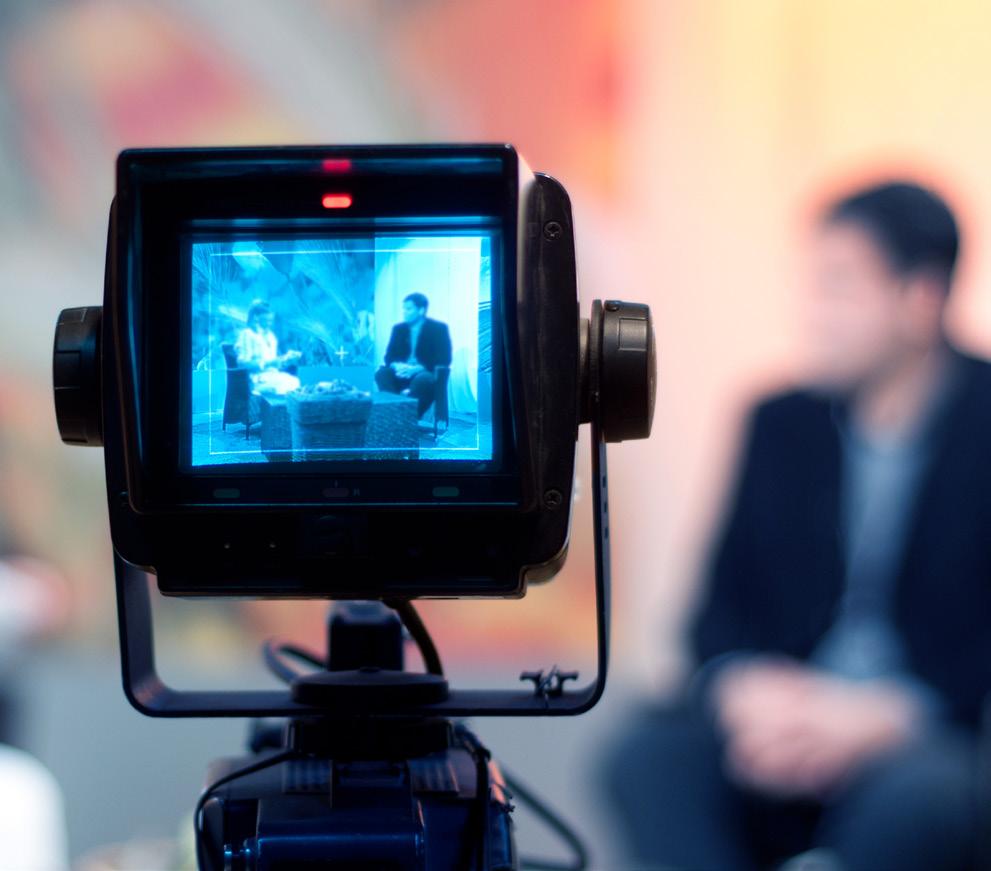
How videos help create memorable event content
In a darkened convention center, attendees get a break from the adrenaline-pumping excitement of an annual meeting. They can relax and reflect while focusing their full attention on just one thing: A series of 4-to-6-minute shorts highlighting the lives of retail associates from various regions.
If you're trying to connect with an audience on a more heartfelt and human level, don’t be afraid to slow everything down. At a live event, there are many tools at our disposal in how we use the space to create a certain vibe and energy.
The science behind storytelling tells us that our brain produces oxytocin (a feel-good chemical) when hearing about connection and empathy. When we watch the happy ending in the videos, our brains release dopamine which makes us more hopeful and optimistic. Those are exactly the emotions you want attendees to feel when they associate the stories and the event with your brand.
insights magazine | 23
Storytelling humanizes your event
When stories like Maria’s play, you can hear a pin drop—even in a large convention center. People get choked up and teary-eyed. While you don’t want to force that, it naturally happens when you understand your audience and their passion for the brand. When people recognize peers in the video on stage, they often give standing ovations.
The power of moments like this are hard to put into words. Using video storytelling in an event with thousands of attendees is a way to gather everyone around the proverbial campfire. Shooting a series of short films that personify values lets attendees access a collective experience that builds a deeper emotional connection.
Maria’s employer, a large retailer, turned ITA Group’s video storytelling project into a tradition at the annual event.

This company recognized how authentically spotlighting their people is an engaging tool to connect all managers and employees and celebrate culture. Their leaders value learning an employee’s story as the first step to understanding what motivates them and creating an environment where everyone can thrive.
Brands that focus on psychological safety benefit from the storytelling approach by encouraging people to bring their best selves to work, home and the community. Highlighting our shared humanity creates the lasting loyalty employers crave.

Using storytelling elements to align your event attendee experience journey along a narrative arc puts participants in the middle of your brand's message. Read our article to learn how to apply elements of storytelling to experience design.
info.itagroup.com/experience-design
24 | insights magazine

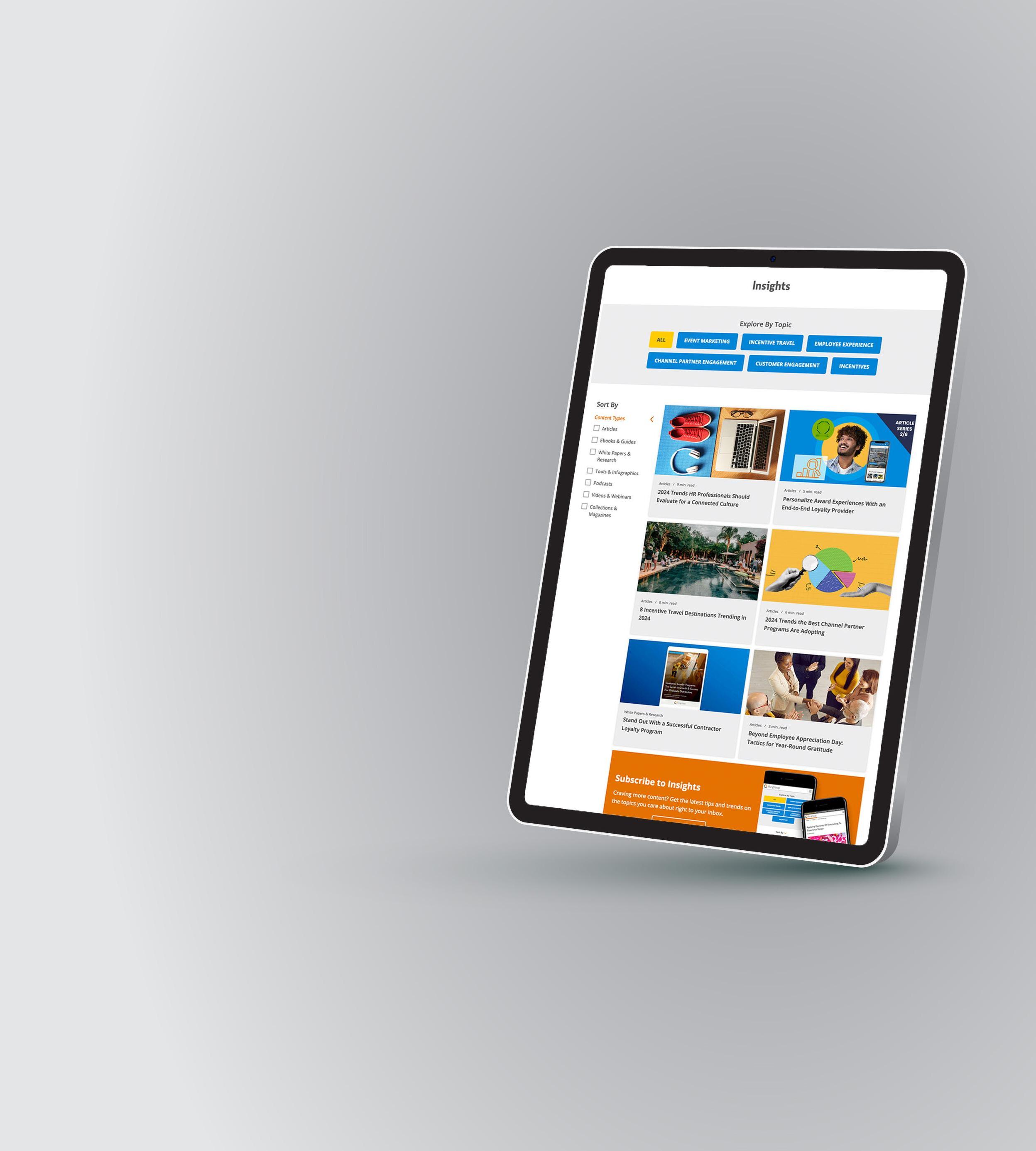
Craving more content? Get the latest tips and trends on the topics you care about right to your inbox. Event Marketing Incentive Travel Employee Experience Channel Partner Engagement Customer Engagement Incentives Subscribe to Insights info.itagroup.com/insights ITA Group® and the ITA Group logo are registered trademarks of ITA Group, Inc. All rights reserved.



 CASEY MOHAN
Vice President, Qualitative Insights & Strategy, CMB
CASEY MOHAN
Vice President, Qualitative Insights & Strategy, CMB
 SASHA MCCUNE
Vice President, Media, Entertainment & Culture, CMB
SASHA MCCUNE
Vice President, Media, Entertainment & Culture, CMB
 RICHARD SCIONTI
RICHARD SCIONTI
 MEGAN MERRY
Creative Design Director, ITA Group
MEGAN MERRY
Creative Design Director, ITA Group
 ERICA LALK Senior Manager, Strategy Team, Event Solutions, ITA Group
ERICA LALK Senior Manager, Strategy Team, Event Solutions, ITA Group
 By: Max Kenkel Senior Manager, Customer Solutions, ITA Group
By: Max Kenkel Senior Manager, Customer Solutions, ITA Group


 By: Ellen Linkenhoker Senior Manager, Channel Solutions, ITA Group
By: Ellen Linkenhoker Senior Manager, Channel Solutions, ITA Group



 By: David Colgate, Innovation Director, NKD, and Tanya Fish, Employee Experience Solution Line Manager, ITA Group
By: David Colgate, Innovation Director, NKD, and Tanya Fish, Employee Experience Solution Line Manager, ITA Group








 By: Jeff Vara, Executive Creative Director, Hartmann Studios, and Ashley Bohnenkamp, Senior Manager, Event Solutions, ITA Group
By: Jeff Vara, Executive Creative Director, Hartmann Studios, and Ashley Bohnenkamp, Senior Manager, Event Solutions, ITA Group





